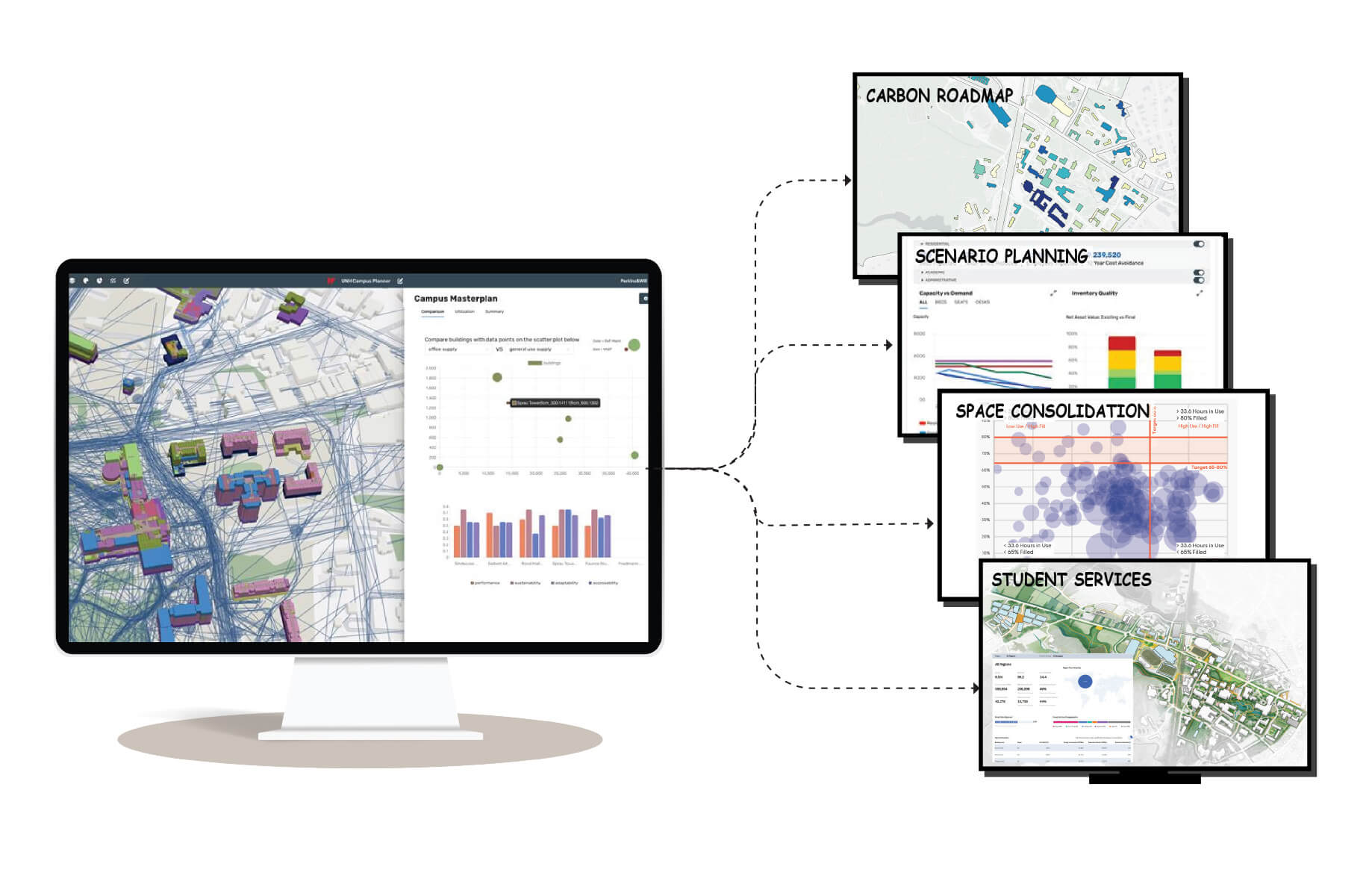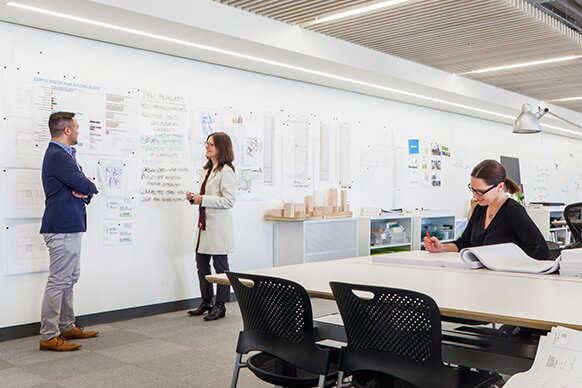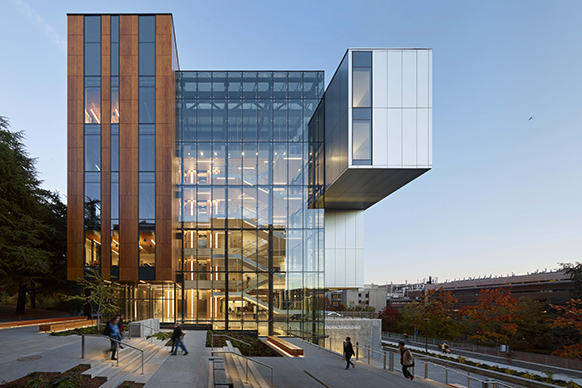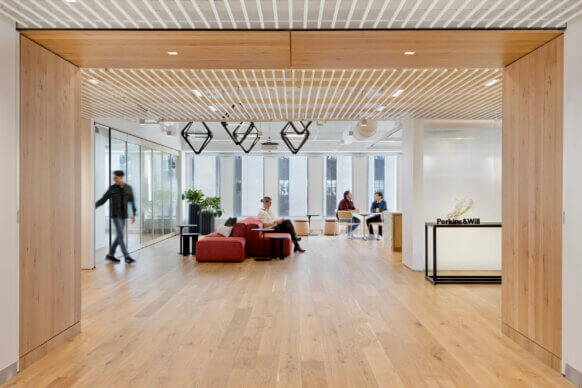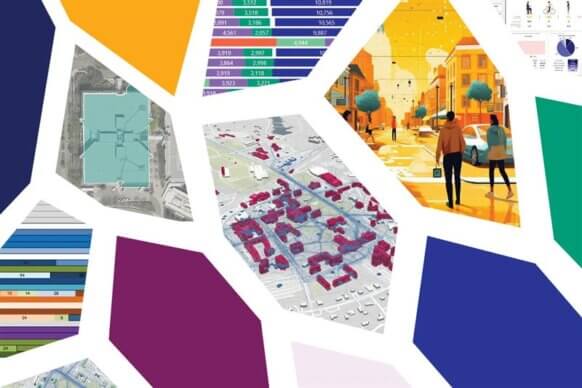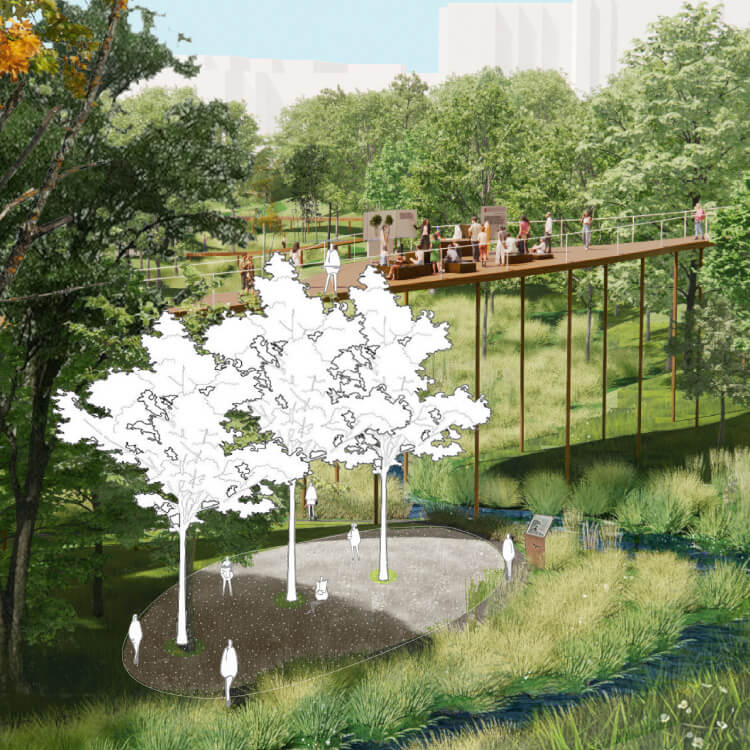
University of New Hampshire, Campus Master Plan
At the University of New Hampshire, our transformative 10-year campus master plan is designed to support four strategic priorities: enhancing student success and well-being, expanding academic and research excellence, embracing the roots of rural New Hampshire, and building financial strength.
This plan is not just about buildings and infrastructure; it’s about creating a vibrant, resilient community where students can flourish, researchers can innovate, and the campus’s connection to New Hampshire can deepen.
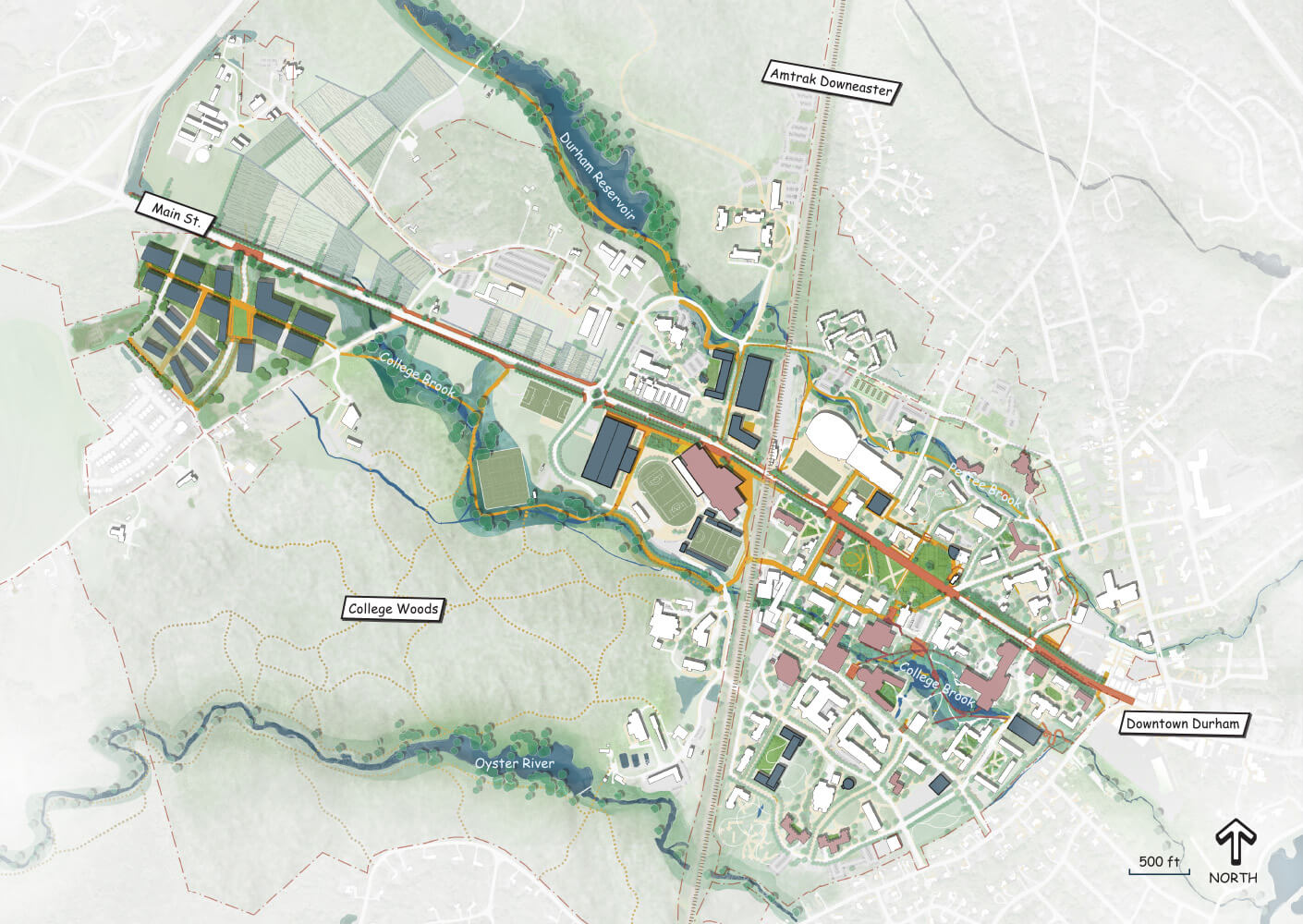
The plan calls for restoring 2,700 feet of waterways and 12 acres of natural space, while removing 11.5 acres of surface parking. A new 700-foot pedestrian-friendly road enhances walkability and campus flow. Rather than expanding outward, the plan focuses on revitalization, renovating 1.5 million gross square feet of existing infrastructure and identifying 72,000 assignable square feet for consolidation.

Spending time in nature can ease stress, anxiety, and depression, and UNH embraces this connection by weaving green spaces, walkable paths, and outdoor recreation into daily campus life. This commitment extends to academics and research, with nine environmentally focused majors, five health and wellness programs, and six research institutes dedicated to human and environmental well-being.
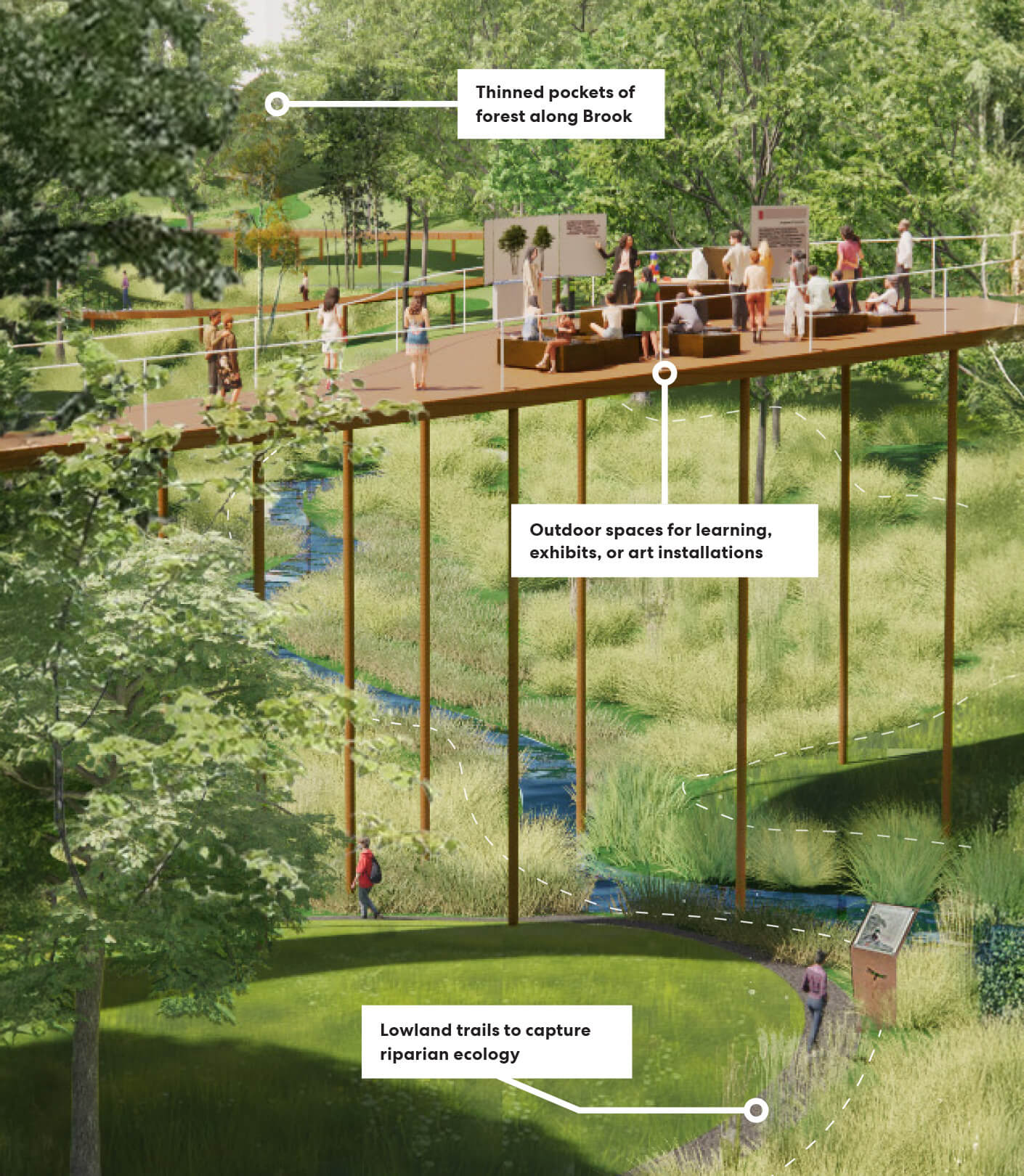

A diverse range of plant and animal species helps regulate air and water quality, control pests, and pollinate crops. At UNH, biodiversity enhances ecological research, provides hands-on learning opportunities, and contributes to campus sustainability efforts.
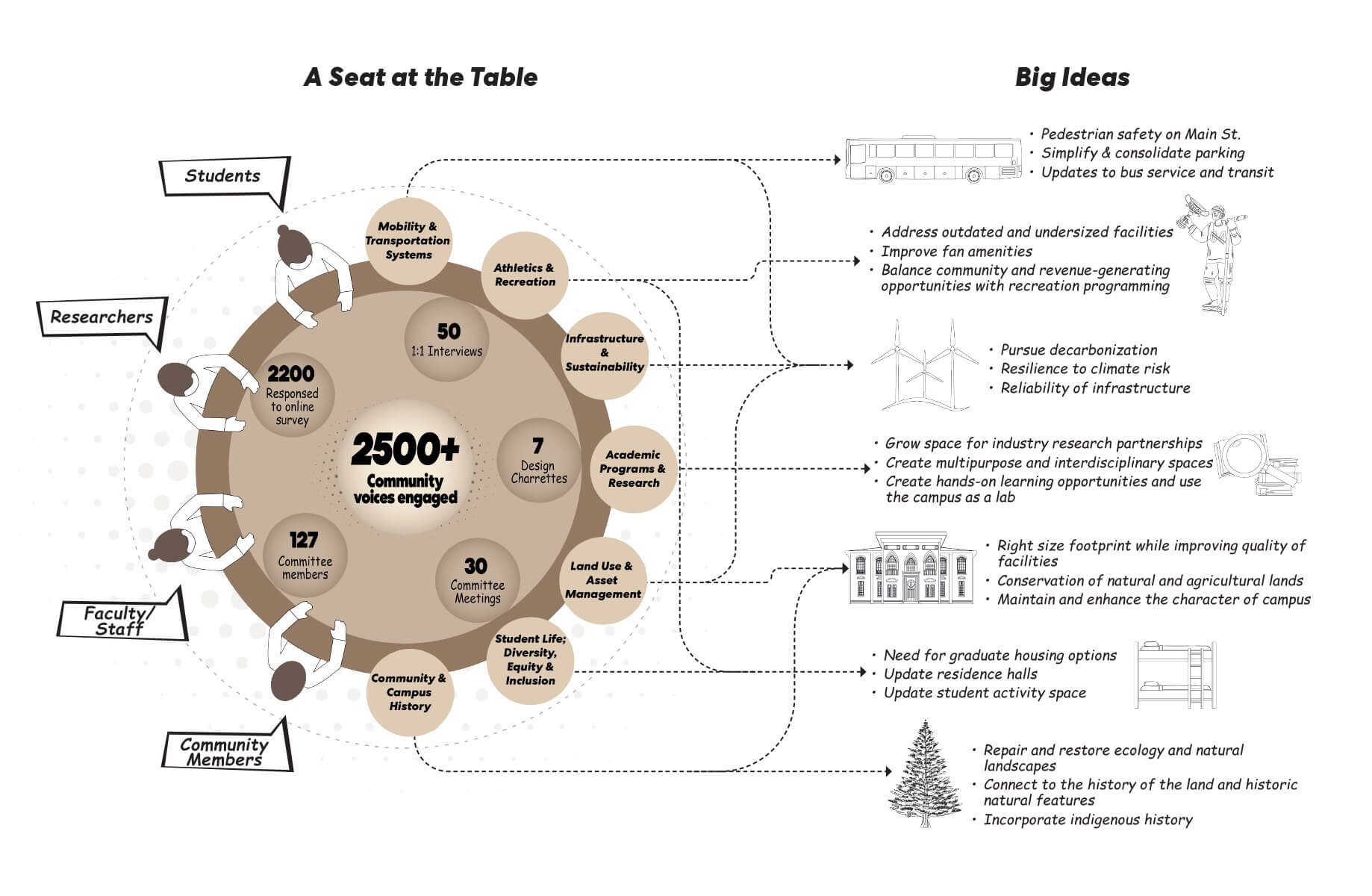
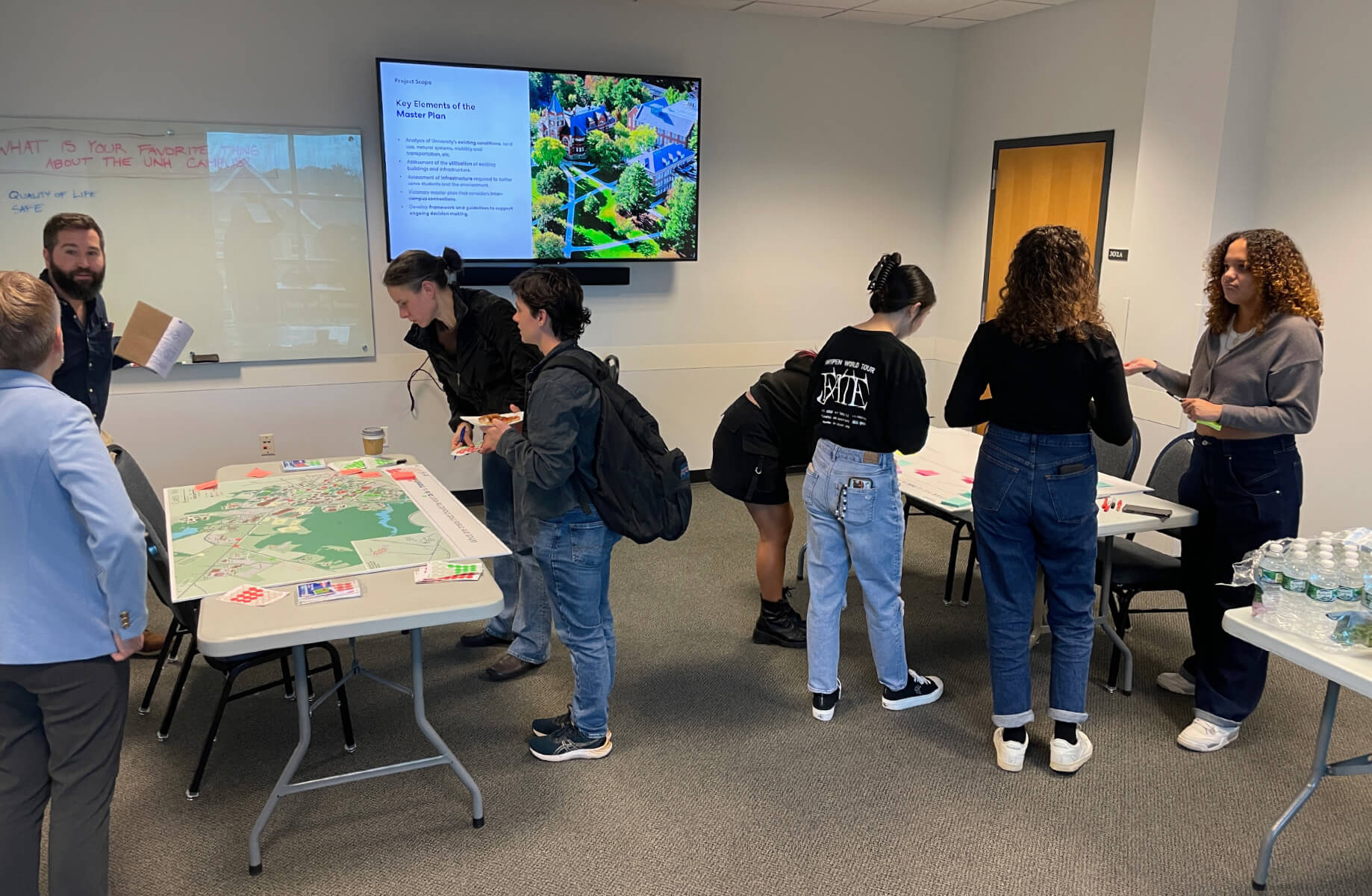

Creating an iterative feedback loop ensured community concerns were addressed and incorporated, fostering trust and aligning the process with the values and needs of those most affected by the planning efforts.

